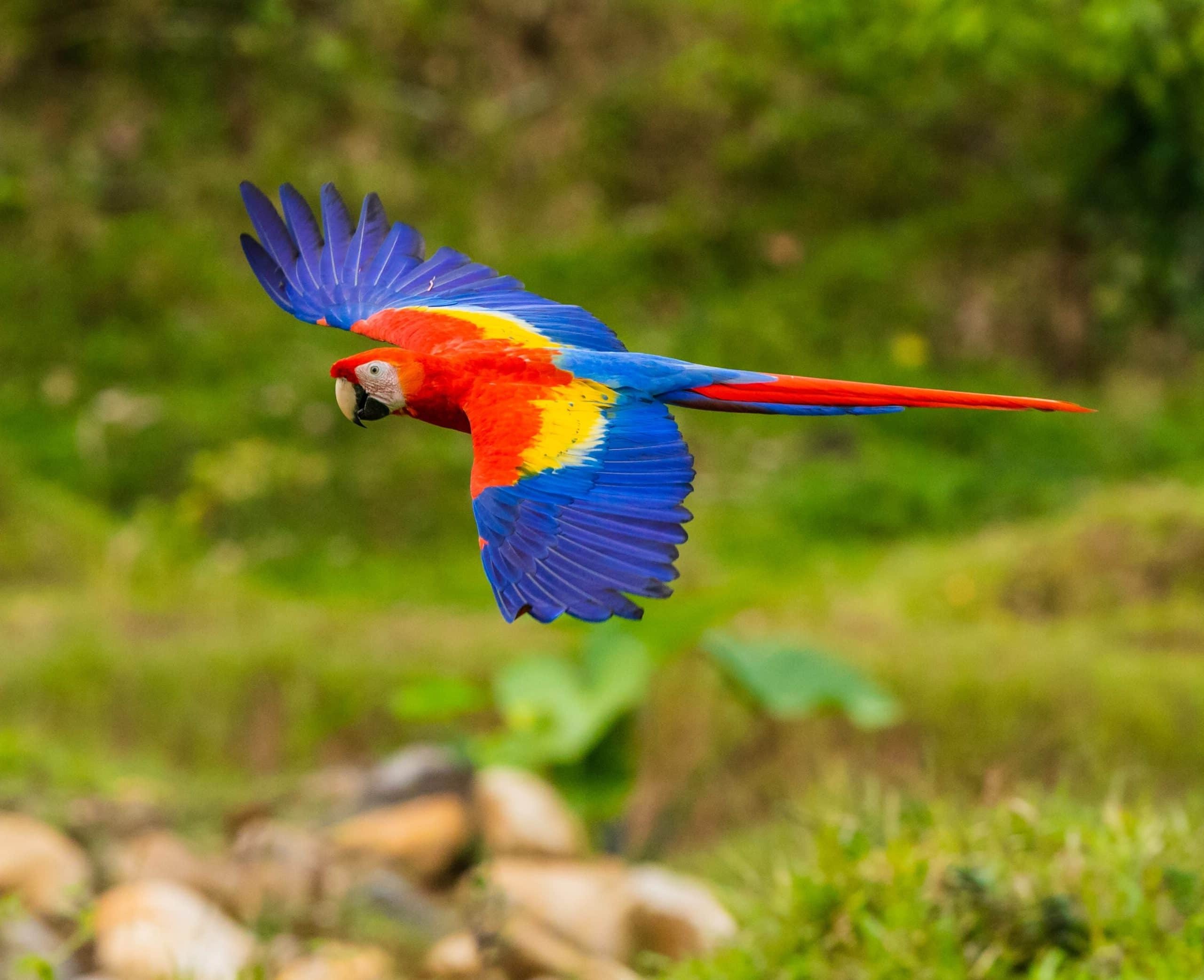Mystery Of Scarlet Macaws In The Rainforest Skies

Have you ever wondered why scarlet macaws are so vibrant? These stunning birds, with their bright red, yellow, and blue feathers, are a sight to behold in the rainforests of Central and South America. Their colors aren't just for show; they play a crucial role in their survival. From attracting mates to blending into the colorful canopy, these hues serve multiple purposes. But there's more to these birds than just their looks. Scarlet macaws are known for their intelligence, social behavior, and strong family bonds. They can live up to 50 years, making them one of the longest-living parrot species. Ready to learn more about these fascinating creatures? Let's dive into the world of scarlet macaws and uncover their secrets.
The Enigmatic Scarlet Macaws
Scarlet Macaws, with their vibrant plumage and striking presence, captivate anyone lucky enough to spot them. These magnificent birds are native to the rainforests of Central and South America. Let's explore some of the best places to witness these colorful creatures in their natural habitat.
Best Spots to See Scarlet Macaws
Finding Scarlet Macaws in the wild can be an adventure. Here are some top locations where you can see these beautiful birds.
- Corcovado National Park, Costa Rica
Corcovado National Park is a haven for wildlife enthusiasts. This park boasts one of the largest populations of Scarlet Macaws in Central America. The lush rainforest and diverse ecosystem make it an ideal spot for birdwatching.
- Tambopata National Reserve, Peru
Located in the Peruvian Amazon, Tambopata National Reserve offers a unique opportunity to see Scarlet Macaws. The clay licks here attract these birds in large numbers, providing a spectacular sight for visitors.
- Manuel Antonio National Park, Costa Rica
Manuel Antonio National Park is another excellent location in Costa Rica to observe Scarlet Macaws. The park's combination of rainforest and beach environments creates a perfect backdrop for spotting these vibrant birds.
- Carara National Park, Costa Rica
Carara National Park is known for its rich biodiversity and is a prime spot for birdwatching. Scarlet Macaws are frequently seen here, especially along the Tarcoles River.
- Piedras Blancas National Park, Costa Rica
Piedras Blancas National Park, located in the southern part of Costa Rica, is a lesser-known gem for spotting Scarlet Macaws. The park's remote location ensures a more intimate experience with nature.
Tips for Spotting Scarlet Macaws
Seeing Scarlet Macaws in the wild requires some patience and preparation. Here are a few tips to increase your chances of a successful sighting.
Early Morning Visits: Scarlet Macaws are most active during the early morning hours. Plan your visit accordingly to catch them at their liveliest.
Bring Binoculars: These birds often perch high in the trees. Binoculars will help you get a closer look at their stunning plumage.
Hire a Local Guide: Local guides know the best spots and times to see Scarlet Macaws. Their expertise can significantly enhance your birdwatching experience.
Stay Quiet and Patient: Scarlet Macaws can be shy. Keeping noise to a minimum and being patient will increase your chances of seeing them.
Conservation Efforts for Scarlet Macaws
Scarlet Macaws face threats from habitat loss and illegal pet trade. Conservation efforts are crucial to ensure their survival. Here are some initiatives helping to protect these magnificent birds.
- Macaw Recovery Network
The Macaw Recovery Network focuses on the conservation of Scarlet Macaws in Costa Rica. They work on habitat restoration, research, and community engagement to protect these birds.
- Tambopata Macaw Project
The Tambopata Macaw Project in Peru conducts research and conservation activities to protect macaws in the Amazon. Their work includes monitoring populations and studying the birds' behavior.
- Wildlife Conservation Society (WCS)
WCS works globally to protect wildlife, including Scarlet Macaws. Their efforts include habitat preservation, anti-poaching measures, and community education programs.
- Rainforest Alliance
The Rainforest Alliance promotes sustainable practices that benefit both people and wildlife. Their work helps protect the habitats of Scarlet Macaws and other rainforest species.
- World Parrot Trust
The World Parrot Trust focuses on the conservation of parrots worldwide. Their initiatives include habitat protection, research, and efforts to combat the illegal pet trade.
Final Thoughts on Scarlet Macaws
Scarlet Macaws are truly a sight to behold. Their vibrant colors and majestic presence make them one of the most iconic birds of the rainforest. By visiting these locations and supporting conservation efforts, you can help ensure that future generations will also have the chance to witness these incredible creatures in the wild.
Scarlet Macaws: Nature's Colorful Marvels
Scarlet Macaws are more than just beautiful birds. They play a vital role in the rainforest ecosystem by spreading seeds and helping forests grow. Their bright red, yellow, and blue feathers make them easy to spot, but their numbers are declining due to habitat loss and illegal pet trade. Protecting these birds means preserving their homes and stopping illegal activities. By supporting conservation efforts, everyone can help ensure that future generations will see these stunning creatures in the wild. Next time you hear a loud squawk or see a flash of red in the rainforest, remember the importance of Scarlet Macaws. They are a symbol of the rainforest's health and beauty. Let's all do our part to keep them flying high.

